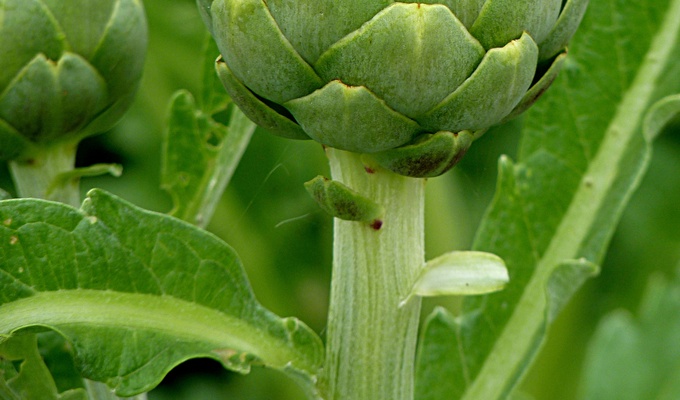Artichoke is a thistle cultivated for the use of its flower bud as food. Depending on the maturity of the bud they are eaten in various ways:
- The outer bracts can be pulled off to reveal the tender light green ones on the inside, and the entire bud steamed, or boiled.
- The entire bud, including the tougher outer bracts, can be steamed, and then eaten by pulling off each bract, dipping the tender base in mayonnaise or aioli, and consuming the fleshy base
- The artichoke heart, made of the tender lower portion of the bracts and the base, can be cut out and sautéed, fried, steamed, puréed
The thorny "choke" or "beard" is a mass of immature florets, which lies between the bracts and the base. It is inedible, and should be cut away before the artichoke is served.
Artichoke is a domesticated variant of wild cardoon, which is native to the Mediterranean. It is not clear exactly when the plant was first domesticated, though evidence of cultivated cardoons dates to the 8th century BCE.
Word origins
Early modern Italian articiocco, from one of medieval Spanish alcarchofa or medieval Andalusi Arabic al- "the", kharshüfa.

